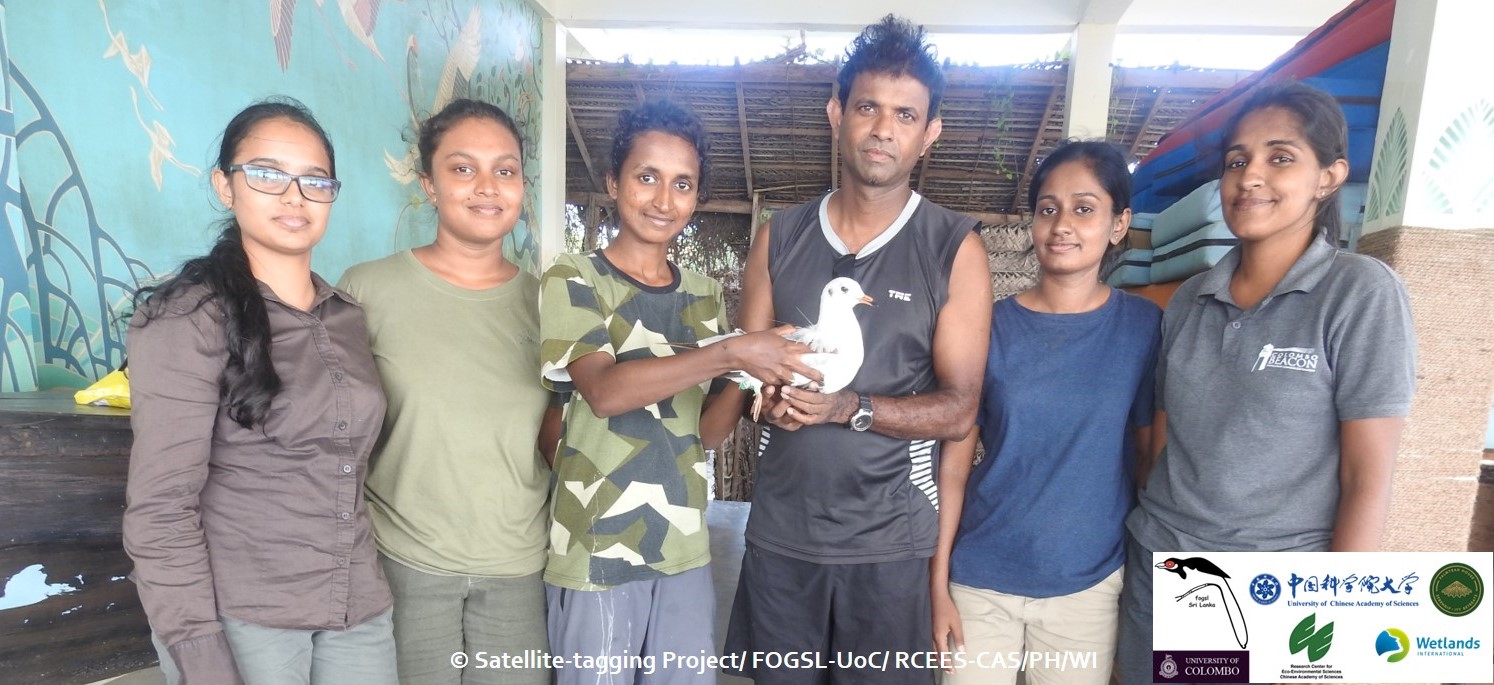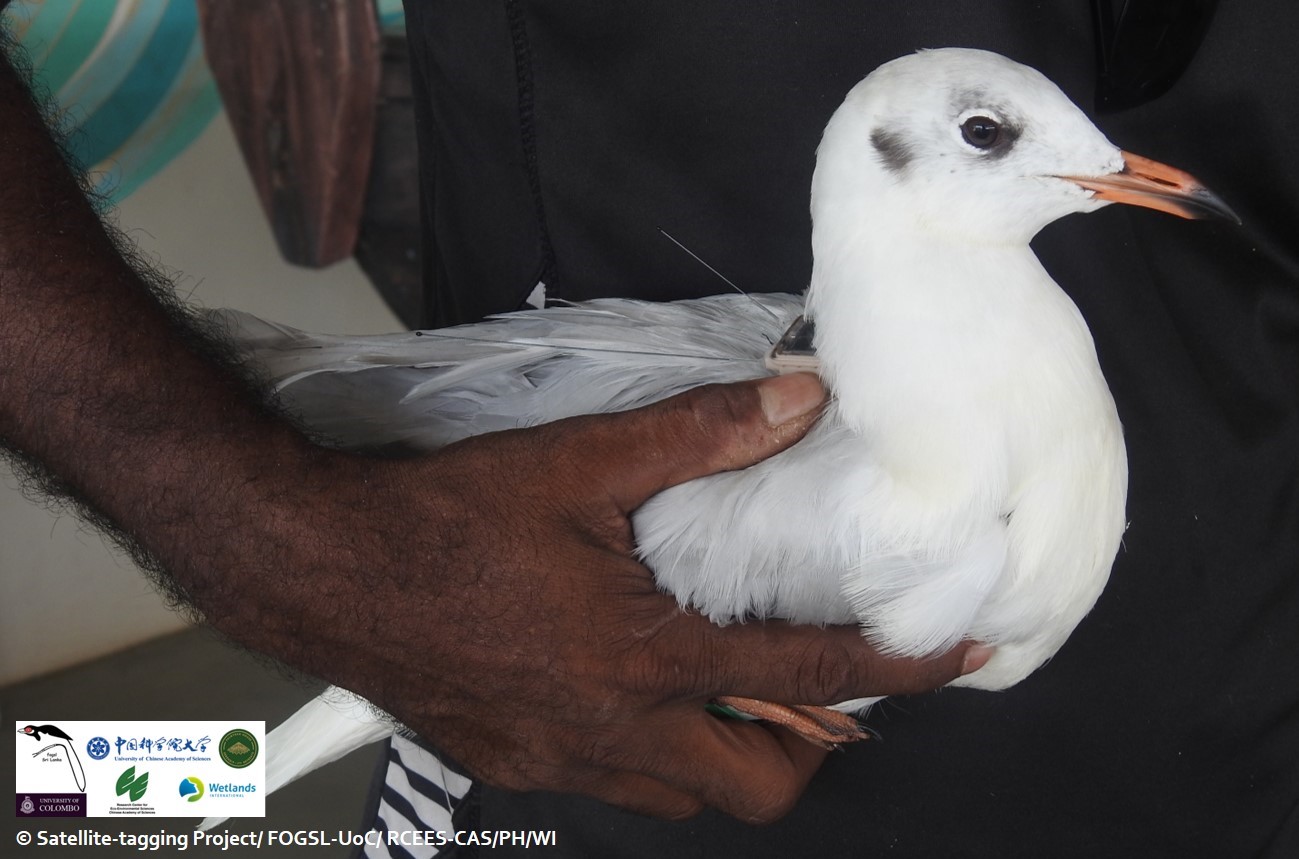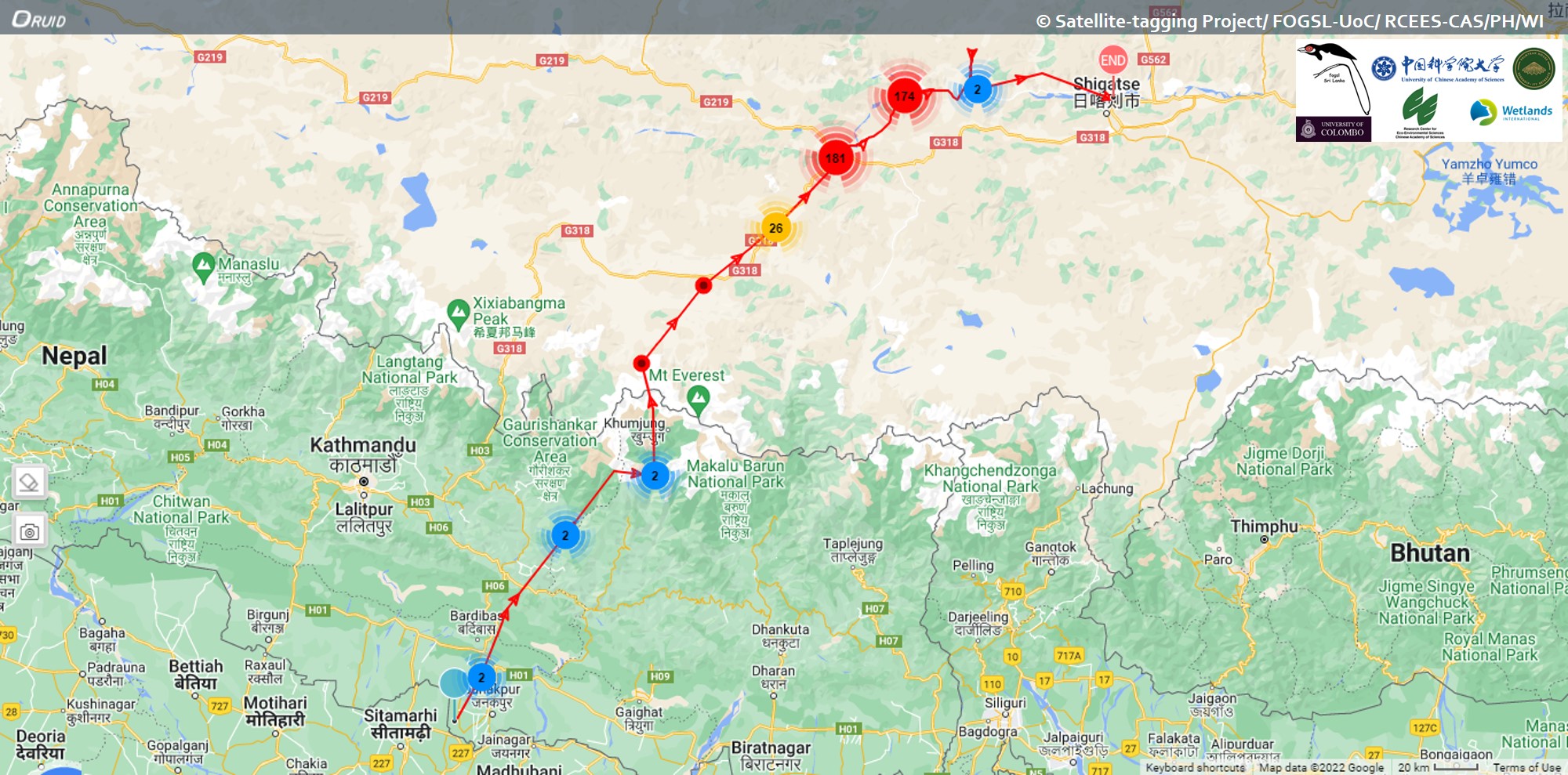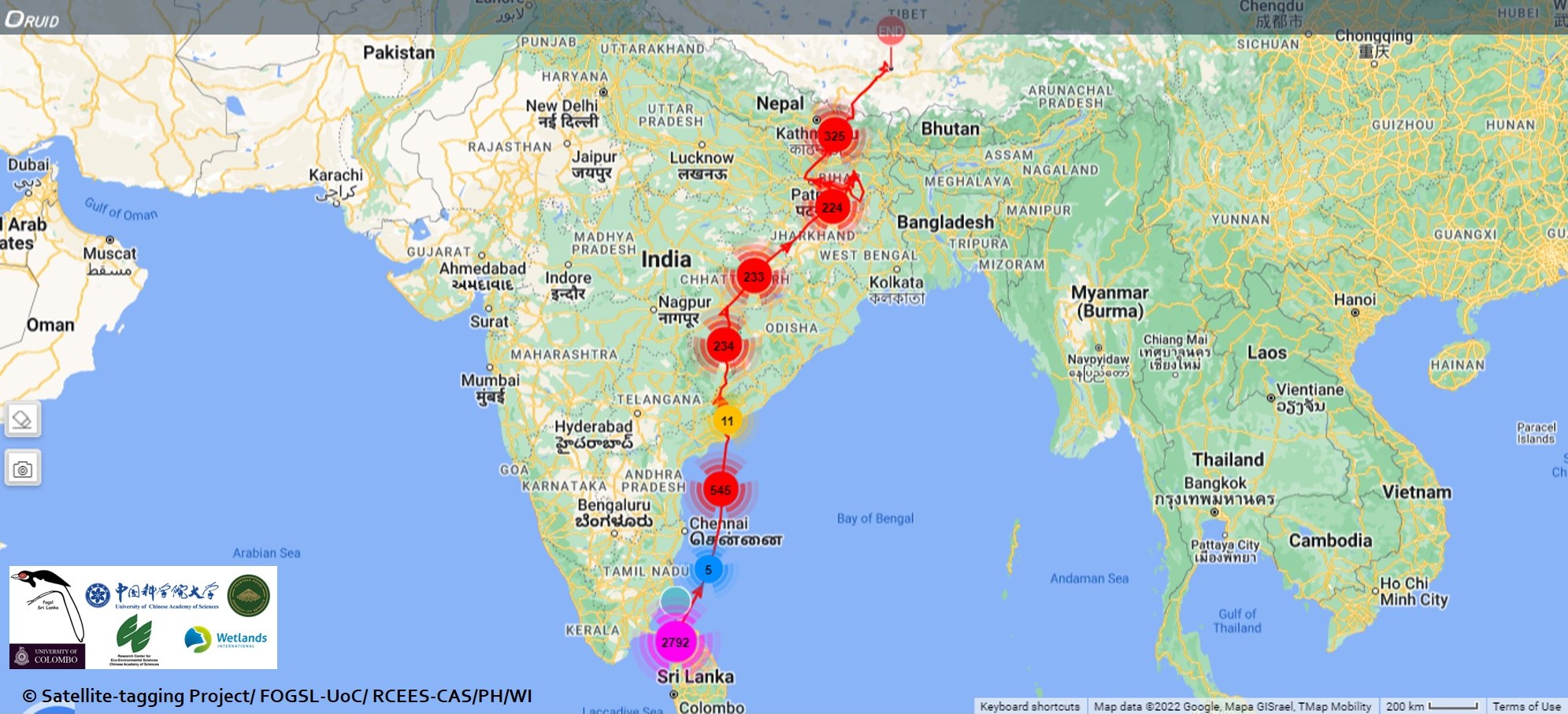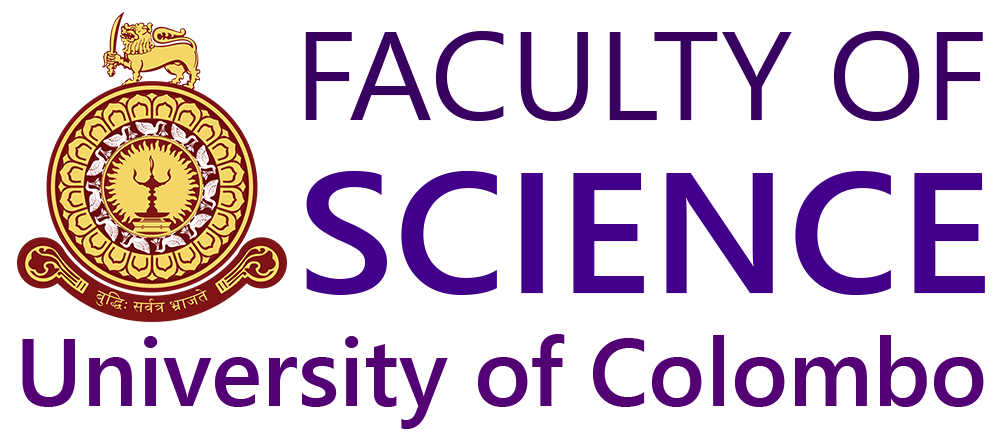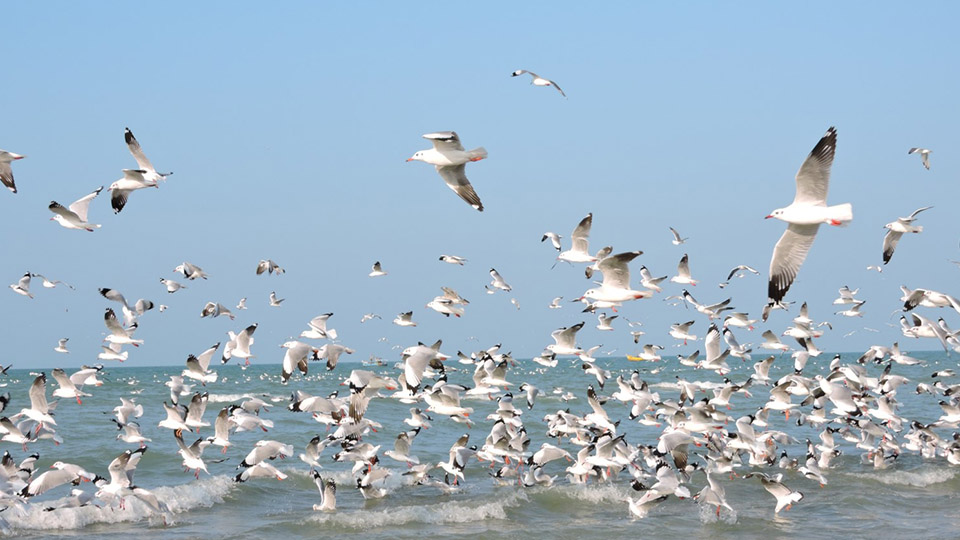FOGSL, University of Colombo unravels the mysterious migratory journeys of enigmatic waterbirds of Sri Lanka – Part 03: The Himalayan Crossing of Brown-headed Gulls (Chroicocephalus brunnicephalus) - 2022
It is with great excitement that we announce the second Himalayan crossing of a tagged bird of our CAF migration tracking project in Sri Lanka.
After witnessing the trans-Himalayan crossing of our first tagged Brown-headed Gull (Hima Kumari) last year, we have just observed another successful Himalayan crossing. Again, it is another Brown-headed Gull that we tagged in Thalaimannar fishing harbor in Northwestern Sri Lanka on the 30th of March.
Having wandered around the wetlands of Mannar for a period of one & half months, our Brown-headed Gull finally left Mannar on the night of May 14th, via Iranativu Island, then Point Pedro of northern Sri Lanka, to arrive at Godavari River on the coast of Andhra Pradesh, India, on the dawn of 15th May. This first phase of his tour lasted for 900km and a half a day.
Having spent the day at the Godavari River in India, he recommenced his journey on the 15th night, flying above the states of Telangana, Odisha, Chhattisgarh (crossing Mahanadi River on the way), and Jharkhand, to arrive in Bihar by the 16th night. A day’s journey encompassed an astonishing 1200km! Only by then, he decided to stop over there in the Ganges, Patna (Bihar, India) for two days – 17th & 18th May.
The third & most challenging phase of his journey began on the 18th night as he departed his stopover in Patna. Flying northeast, he crossed the Indo-Nepal border at 10.30 at night & started ascending the snow-clad Himalayas after midnight. He flew the high altitudes between the peaks of Cho Oyu (8188m – 27,300 feet, the sixth highest mountain in the world) & Gyachung Kang (7952m – 26,510 feet). Our humble gull from the fishing ports of north was climbing the Himalayas, just 20km west of Mt. Everest!
By then we nicknamed him ‘Sherpa Tenzing’ to honor the great sherpa who accompanied the New Zealand explorer Edmond Hillary on their historic journey, 69 years ago, along this same snowfield in the month of May, 1953. The two men reached Everest a few days after that, making them the first men to conquer the tallest peak on the planet. Sherpa Tenzing Norgay, a member of a Himalayan native community, was considered one of the top 100 men who influenced humanity in the 20th century!
Our ‘Sherpa Tenzing’ crossed the Himalayas at 7600m (24,930 feet) and arrived at the Tibetan plateau on the 19th morning. He continued further up to Yarlung Zangbo River, which is a tributary of Brahmaputra River in Tibet by noon. This third phase of his trip consisted of some 550km across the tallest mountain range on the planet.
The whole journey of Sherpa Tenzing from Mannar to Tibet via Nepal lasted four & half days during which he flew an astonishing 4,840km, from sea level in Mannar to 24,930 feet up in the snow-clad peaks!
Sri Lanka GPS/GSM Satellite Tagging Study of the Migratory Birds in the Central Asian Flyway is a collaborative study led by Prof. Sampath Seneviratne, while Ms. Gayomini Panagoda works as the main Research Associate and the doctoral candidate. Ms. Panagoda’s PhD study is supervised by Prof. Seneviratne, Prof. Sarath Kotagama (University of Colombo), Dr. Taej Mundkur (Wetlands International, Netherlands) and Dr. S. Balachandran (Bombay Natural History Society, India). The technical partnership is between the Field Ornithology Group of Sri Lanka (FOGSL) of the Department of Zoology and Environment Sciences, University of Colombo & the Research Center for Eco-Environmental Sciences of Chinese Academy of Sciences (CAS) led by Prof. Lei Cao and her team. The Wetlands International is also a partner in this study. This study is funded by the Palmyrah House (Pvt) Ltd. and the Vayu Resort, Mannar. The Department of Wildlife Conservation and Sri Lanka Navy provide permits and site clearance to conduct fieldwork.
Sherpa Tenzing was tagged in March by the satellite tagging team, which consisted of the main researchers and the 3rd Year Zoology Special students (Ayeshma, Tharuka, Thaaruka, Janani, Prbashini and Pawani) of the Department of Zoology and Environment Sciences, University of Colombo.
